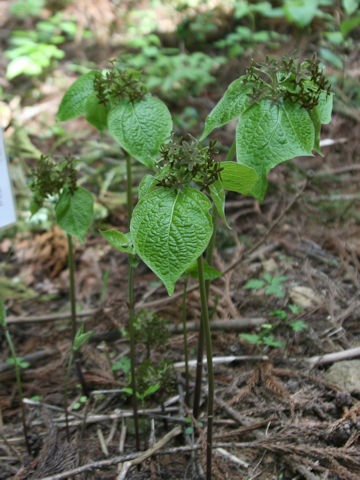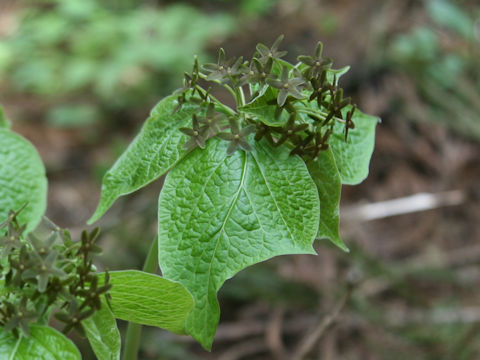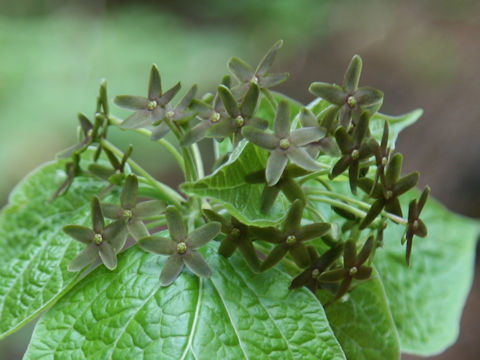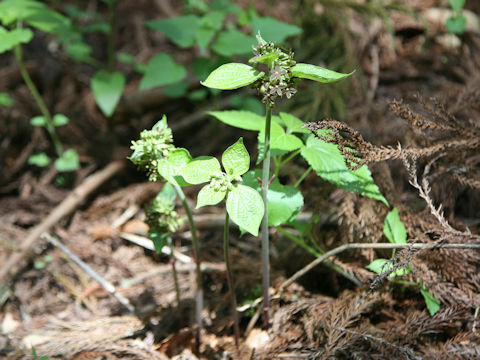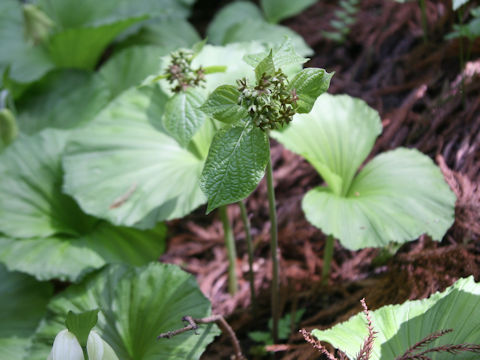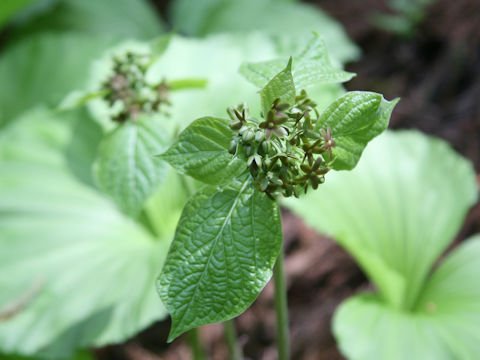
|
The "Tachi-gashiwa" (Cynanchum magnificum) belongs to Asclepiadaceae (the Milkweed family). It is a perennial herb that is endemic to Japan and is distributed in Honshu. (There are also reports that it has a distribution range in Shikoku and Kyushu, but we have not been able to confirm this, so we will omit those reports.) It grows in the shade of deciduous forests and is 30-60 cm tall. The stem is erect and unbranched, with fine hairs. The leaves are broadly ovate and clustered at the end of the stem. The greenish-brown flowers bloom rather densely at the top of the stem from May to June. The corolla has five deep lobes and is hairless. The fruit is a follicle, with the two fruits obliquely raised above each other. In fall, the follicles split open and the seeds, which are covered with white silky pappus, burst forth. The Japanese name is derived from its upright stem, which resembles the "Tsuru-gashiwa" (Vincetoxicum macrophyllum var. nikoense).
|
